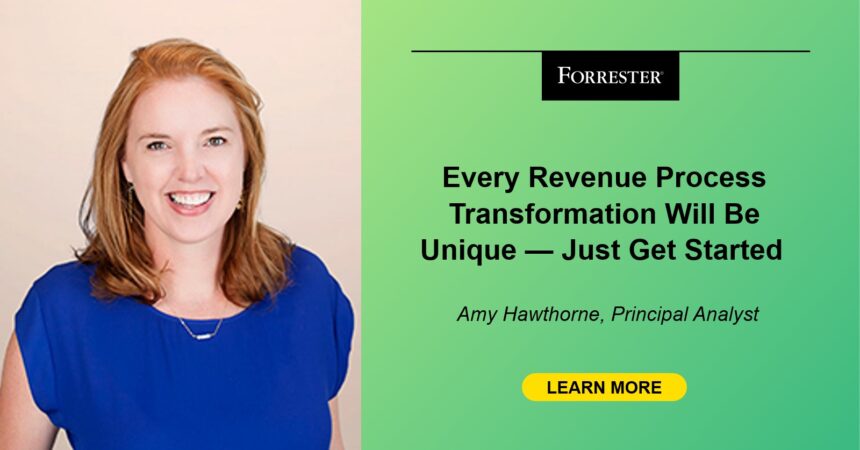The balance of power has shifted, and today’s B2B buyers are in control of their purchasing journey. They have access to a wealth of information, and as my colleague Terry Flaherty says, the buyer now gets to decide if and when they “MQL.” This new reality requires organizations to shift their mindset and prioritize the buyer’s goals over their own.
To drive long-term growth, organizations need to transform their revenue process to focus on delivering value to the buyer at every stage of the customer journey. This means shifting from an inside-out approach that favors the provider to an outside-in perspective that centers on the customer. By understanding the buyer’s needs and providing relevant, personalized experiences, organizations can differentiate themselves and build lasting partnerships.
A revenue process transformation isn’t a project or a single workshop initiative. It is an ongoing, collaborative effort to optimize internal processes to better align frontline teams to each other AND the customer. Where each organization starts on this journey is different. It’s important to be realistic about your current state and develop a timeline and roadmap that continues to build confidence in the new process and future results.
Here are a few ideas to help you get started.
- If you’re stuck on MQLs and sourced pipeline, identify and address inefficiencies in your existing revenue process regardless of the organization’s readiness to make a larger transformation. Conduct a cross-functional analysis of existing processes to identify breakdowns, training and enablement needs, and, most importantly, actionable plans for the proposed adjustments. For example, if sales is failing to act on the leads that marketing passes over, you might need to gain agreement on what constitutes a lead or consider implementing service-level agreements that specify when sales needs to act on leads. Fixing inefficiencies in an existing MQL process will make it easier to more fully transform your revenue process in the future.
- If you’re considering the move to buying groups, pull together a cross-functional team (a “revenue management council”) and start working on a roadmap to change the way that frontline teams work together. To create a realistic timeline for change, start by documenting the current state. It’s important to have a good understanding of existing foundational processes across all teams interacting with prospects and customers before making changes. With these insights you can create a roadmap for transitioning to being signal-led, shifting from MQLs and leads to buying groups, leveraging an opportunity-based infrastructure, and having a shared set of data, metrics and goals for all frontline teams to work from. When you are ready to start making shifts, consider a pilot to gain commitment and support from executive leadership before implementing broader changes and leverage this support to drive adoption across the organization.
- If you already have strong marketing and sales alignment, look to closely align customer success with the rest of your revenue process to ensure that your entire organization is focused on customer value throughout the customer lifecycle. Successfully selling additional solutions to existing customers (as cross-sell, upsell, or retention opportunities) depends on the customer recognizing value from all their purchased solutions and their overall experience with the organization.
Our new guide, “Anchor Your Revenue Process In Customer Growth,” goes deeper into what revenue process transformation requires. Central to this — no matter where you are along the journey — is that centering your decisions on your customers is essential to driving long-term growth. If a proposed action or change doesn’t create a better experience that helps your buying group members on their journey to find a solution or address a business pain, then reconsider.








